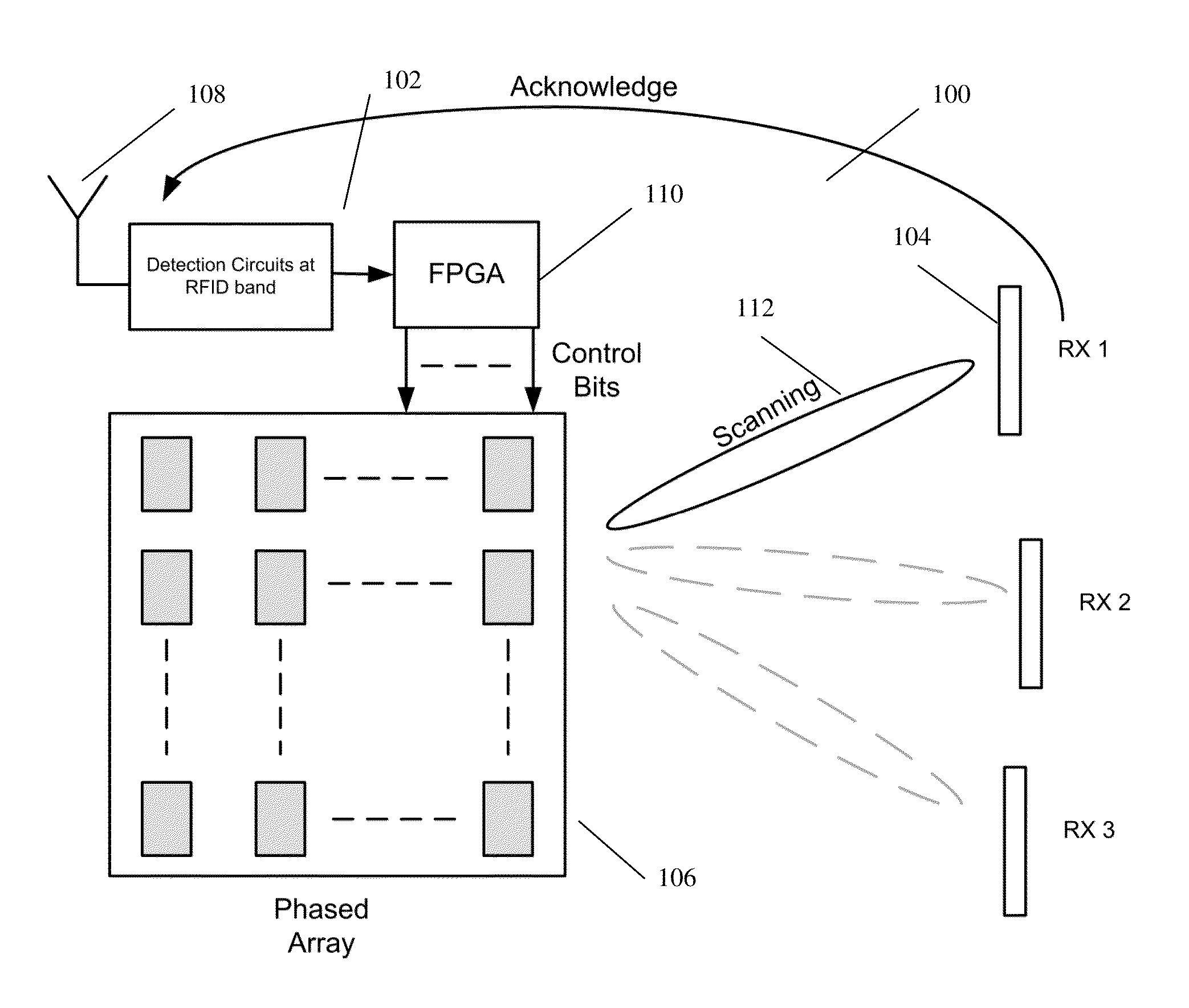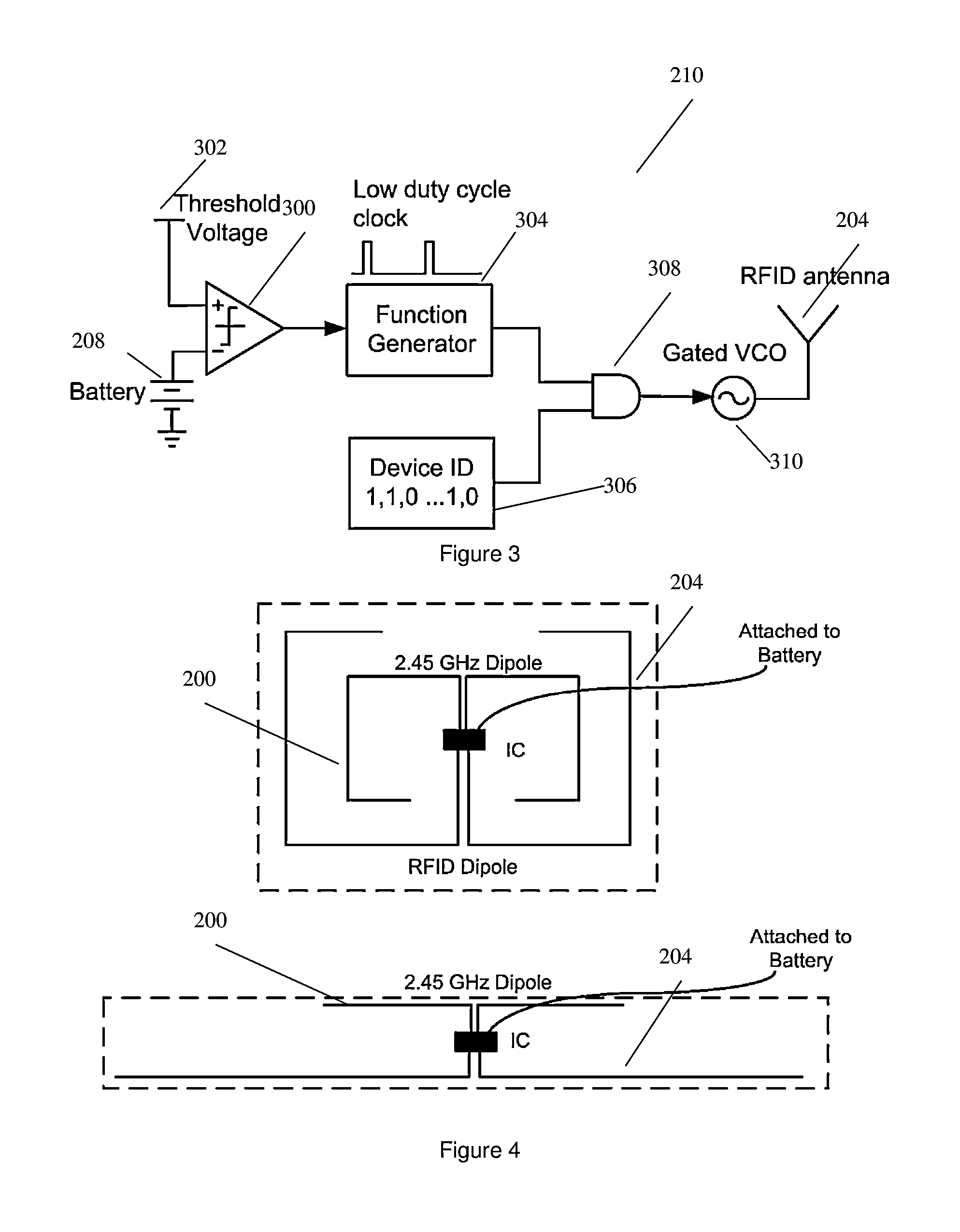Wireless energy transfer system
a technology of energy transfer system and wires, which is applied in the direction of transformers/inductance circuits, basic electric elements, inductances, etc., can solve the problems of power consumption at the receiver, methods that are sensitive to the orientation of the device, and prior art solutions such as rfid may prove difficult, so as to avoid unnecessary radiation to humans
- Summary
- Abstract
- Description
- Claims
- Application Information
AI Technical Summary
Benefits of technology
Problems solved by technology
Method used
Image
Examples
Embodiment Construction
[0037]The system 100 is shown in FIG. 1 for wireless energy transfer between a base station 102 and a mobile electronic device 104. The base station 102 includes a 2.4 GHz steerable antenna 106 for transmitting and a 860 MHz antenna 108 for receiving acknowledgements. A Field Programmable Gate Array (FPGA) 110 acts as a controller. The FPGA 110 controls the steerable antenna 106 to send focused burst of RF radiation scanning across a range of sectors 112 searching for any devices 104. Based on any acknowledgements received, the FPGA 110 will make a determination on the location of any identified devices 104. The steerable antenna 106 then focuses continuous RF radiation towards the location to transfer energy to the device 104. The location is tracked and if the deice 104 moves to another sector, the location is updated.
[0038]The steerable antenna 106 is a phased array with M×N elements. It transmits RF energy at 2.45 GHz and has a range of a couple of meters. The coverage area is d...
PUM
 Login to View More
Login to View More Abstract
Description
Claims
Application Information
 Login to View More
Login to View More - R&D
- Intellectual Property
- Life Sciences
- Materials
- Tech Scout
- Unparalleled Data Quality
- Higher Quality Content
- 60% Fewer Hallucinations
Browse by: Latest US Patents, China's latest patents, Technical Efficacy Thesaurus, Application Domain, Technology Topic, Popular Technical Reports.
© 2025 PatSnap. All rights reserved.Legal|Privacy policy|Modern Slavery Act Transparency Statement|Sitemap|About US| Contact US: help@patsnap.com



